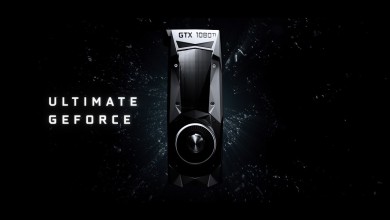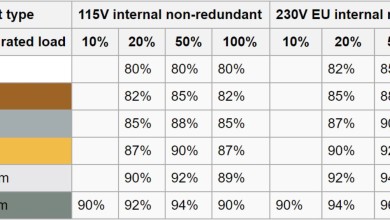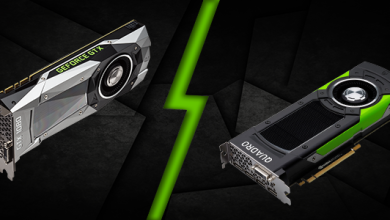Can you use an SSD as a Secondary Drive?
SSDs are slowly but surely becoming the standard for storage in many PCs. It’s not too difficult to comprehend why that is. SSDs are several times faster than a typical mechanical hard drive. Despite that during the initial release of the early SATA SSDs, the prices were so high that a lot of the people in the gaming community just didn’t see the benefit of paying several times more. During that period, SSDs were limited to high-end systems mostly.
These days that is far from reality. Severe price drops over the years have made SSDs extremely popular for nearly any system. It’s not much of a surprise at all these days to see even a budget system utilizing flash storage. That being said, a terabyte of flash storage can easily cost twice the price of a 1TB HDD. That’s why a lot of people prefer to use SSD as their system drive for installing Windows and maybe a few games. Truth be told, that is sufficient for most users and you’ll easily get by if you use an SSD for Windows and a hard drive as secondary storage for mass media.
But what if you want to take it to the next level? Using an SSD as secondary storage might also be useful and upgrade the speed of your PC overall. Now, this depends on a lot of things such as if you would be removing the hard drive completely and using the SSD as the main drive, or using the hard drive for windows and SSD for secondary storage. We will be going over both of these scenarios and give our opinion in the end. Before we do that, let’s quickly break down the benefits of an SSD once more.
Solid State Drives In a Nutshell
 The main difference in mechanical hard drives and solid state drives is the working process. Typical hard drives have moving parts inside them that come to life whenever there is data to be transferred. Moving parts in electronics is not always a good thing. Mechanical hard drives bottleneck the PC performance overall because of slow speeds. Moving parts also result in less reliability. SSDs have a more efficient and reliable working process. The data is stored on NAND chips and the workflow does not require any physical parts. That is why this is known as flash storage. Flash storage provides an overall much better speed, reliability, and efficiency.
The main difference in mechanical hard drives and solid state drives is the working process. Typical hard drives have moving parts inside them that come to life whenever there is data to be transferred. Moving parts in electronics is not always a good thing. Mechanical hard drives bottleneck the PC performance overall because of slow speeds. Moving parts also result in less reliability. SSDs have a more efficient and reliable working process. The data is stored on NAND chips and the workflow does not require any physical parts. That is why this is known as flash storage. Flash storage provides an overall much better speed, reliability, and efficiency.
Can SSDs Be Used For Secondary Storage?
Finally, let’s answer the main question. So we are aware of the fact that Flash storage is better, right? So why do we use hard drives at all? The main thing is the price/performance ratio. Don’t get us wrong, we would love for everyone to just buy a high capacity SSD and call it a day. While that is certainly possible, it’s not really the most practical choice. The question itself has a basic answer. Yes, obviously you can use solid-state drives for secondary storage. You just plug in the SSD and set it up like any other secondary drive. But just because you can doesn’t mean you should.
There are a lot of factors that play into this. Let’s go over some situations most people might run into. The first one is that you already possess a hard drive and are using it as your main storage. It has all your OS stuff, drivers, games and other forms of media. You decide to buy an SSD and want to avoid the fuss of installing the OS onto the SSD and moving over some of the other important stuff. That sounds fine and all but its very counter-intuitive in reality. What SSDs really excel at it is the minimal everyday tasks. Booting up windows, transferring files, opening browsers. It can make simple tasks like that smooth and fast. Sure if you use the SSD as a secondary to store all your games on it, you’ll surely benefit from faster load times in every game. But assuming you have a large library you’ll need a higher capacity drive. If you are buying a higher capacity SSD for games, then just move all the data from the hard drive over to the SSD. Using the hard drive for the OS and SSD for secondary storage results in you missing out on the real benefits of flash storage and the hard drive will still bottleneck in everyday tasks.
The other scenario is if you are building a new PC completely from scratch, you might be considering to add a high capacity SSD and ditch mechanical hard drives altogether. Even though SSDs prices have dropped over the years, a terabyte of storage can still be expensive. It’s not as crazy as it once were though so it is certainly appealing to buy a high capacity drive and get away from slow HDDs all together. The thing is you can still get by fine with an HDD for simple stuff like viewing pictures, videos or transferring small files.
Our Recommendation
Factoring in all the above situations, our answer is relatively simple. While you can use an SSD for secondary storage, the simpler way is just using the flash storage for OS and a few games and the hard drive for mass media storage such as photos and videos. If you can easily afford a high capacity SSD though, definitely go for it and use it as your only drive for all your storage needs.





